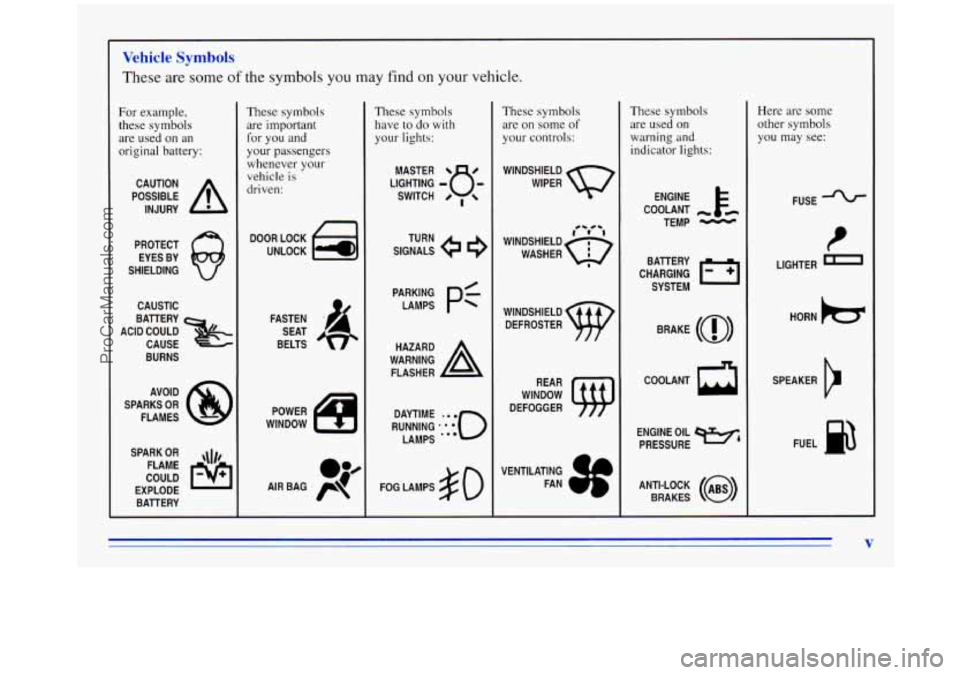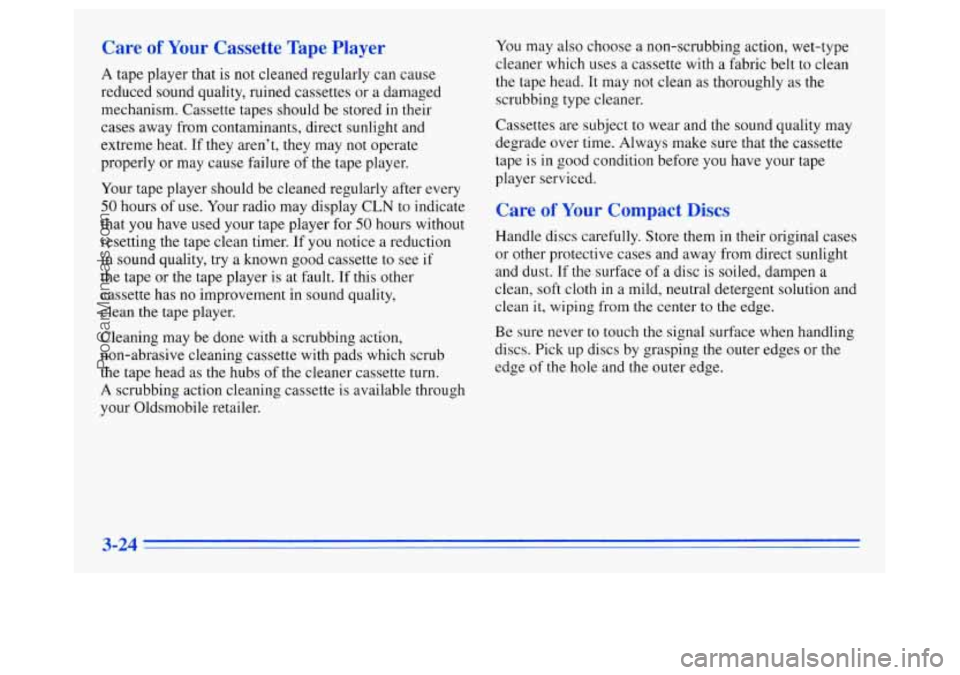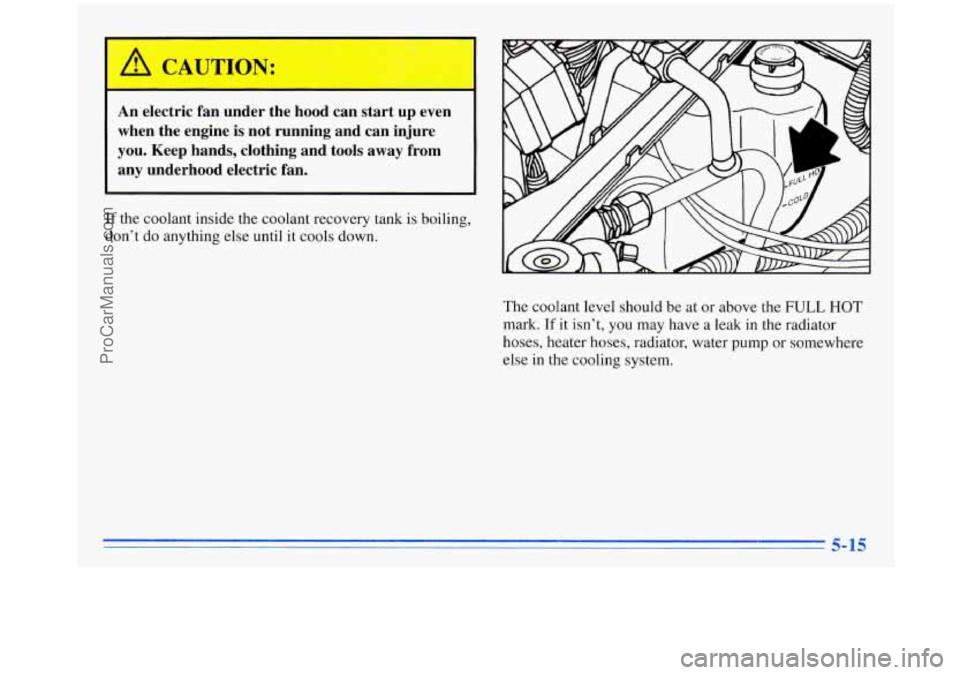oil OLDSMOBILE SILHOUETTE 1996 Owners Manual
[x] Cancel search | Manufacturer: OLDSMOBILE, Model Year: 1996, Model line: SILHOUETTE, Model: OLDSMOBILE SILHOUETTE 1996Pages: 372, PDF Size: 19.39 MB
Page 7 of 372

Vehicle Symbols
These are some of the symbols you may find on your vehicle.
For example,
these symbols are used on an
original battery:
POSSIBLE A
CAUTION
INJURY
PROTECT EYES BY
SHIELDING
CAUSTIC
BURNS
SPARK
OR ,\I/,
COULD FLAME
EXPLODE BAllERY
These symbols are important for you and
your passengers
whenever your
vehicle is
driven:
DOOR LOCK
UNLOCK
SEAT
BELTS
These symbols have to
do with
your lights:
SIGNALS TURN
FOG LAMPS
# 0
These symbols
are
on some of
your controls:
WINDSHIELD
WIPER
WINDOW
DEFOGGER
VENTILATING FAN
These symbols are used on
warning and
indicator lights:
ENGINE k
COOLANT - t6
TEMP -
CHARGING I-1
BAllERY
SYSTEM
BRAKE
(0)
h
COOLANT
ENGINE OIL
e,
PRESSURE
ANTI-LOCK
(@)
BRAKES
Here are some
other symbols
you may see:
FUSE
P
LIGHTER n
HORN b
SPEAKER
b
FUEL e3
V
ProCarManuals.com
Page 91 of 372

How long should you keep the coolant heater plugged
in? The answer depends on the outside temperature, the
kind of oil you have, and some other things. Instead of
trying to list everything here, we ask that you contact
your Oldsmobile retailer in the area where you’ll be
parking your vehicle. The retailer can give you the best
advice for that particular area. Ensure
the shift lever is fully in PARK (P) before
starting the engine. Your Oldsmobile has
Brake-Transaxle Shift Interlock (BTSI). You must fully
apply your regular brakes before you can shift from
PARK
(P) when the ignition key is in the RUN position.
As you step on the brake pedal, while in PARK (P), you
may hear a click from the solenoid of the
BTSI. This
Automatic Transaxle Operation
ensures that the BTSI is operating properly.
If you cannot shift out of PARK
(P), ease pressure on
PARK (P) as
you maintain brake application. Then
move the shift lever into the gear you wish. See
“Shifting Out of PARK (P)” in this section.
There are several
different positions for your shift lever. the shift lever
-- push the shift lever all the way into
PARK (P): This position locks your front wheels. It’s
the best position to use when you start your engine
because your vehicle can’t move easily.
2-27
ProCarManuals.com
Page 144 of 372

Oil Pressure Indicator
Your vehicle is equipped with an oil pressure indicator.
Your oil pressure indicator lets you know when you may
have
a problem with your engine oil pressure.
When the engine is running, readings
within the white
area indicate the normal operating range. Readings
in or
below the red area indicate that the engine's oil level
may be dangerously low, or there may be another
problem causing low
oil pressure. Driving your vehicle
with low
oil pressure can
cause extensive engine damage. Have your vehicle
serviced immediately.
' A CA"T1ON:
I-
Don't keep driving if the oil pressure is low. If
you do, your engine can become so hot that it
catches fire. You
or others could be burned.
Check your oil
as soon as possible and have your
vehicle serviced.
NOTICE:
Damage to your engine from neglected oil problems
can be costly and is not covered by your warranty.
2-80
ProCarManuals.com
Page 145 of 372

Low OilLi -
LOW
OIL
If this light comes on, it
means your engine is low
on oil.
Power Sliding Door Warning Light
With the optional power
sliding door, the sliding
door ajar symbol on your
instrument panel will come
on
if your sliding door is
not completely closed.
You need to check the
oil level right away. Driving your
vehicle without enough oil can cause extensive engine
damage. Have your vehicle serviced immediately. If you shift the transaxle out of PARK (P) while the
sliding door is open or
in the process of closing, and the
power sliding door
ON/OFF switch is in the ON
position, the power sliding door warning light will flash
and a buzzer will sound. This is
a warning that the
sliding door is not completely closed.
ProCarManuals.com
Page 172 of 372

Care of Your Cassette Tape Player
A tape player that is not cleaned regularly can cause
reduced sound quality, ruined cassettes or a damaged
mechanism. Cassette tapes should be stored in their
cases away from contaminants, direct sunlight and
extreme heat. If they aren’t, they may not operate
properly or may cause failure
of the tape player.
Your tape player should be cleaned regularly after every
50 hours of use. Your radio may display CLN to indicate
that
you have used your tape player for 50 hours without
resetting the tape clean timer. If you notice a reduction
in sound quality, try
a known good cassette to see if
the tape or the tape player is at fault.
If this other
cassette has no improvement in sound quality,
clean
the tape player.
Cleaning may
be done with a scrubbing action,
non-abrasive cleaning cassette with pads which scrub
the tape head
as the hubs of the cleaner cassette turn.
A scrubbing action cleaning cassette is available through
your Oldsmobile retailer.
You may also choose a non-scrubbing action, wet-type
cleaner which uses
a cassette with a fabric belt to clean
the tape head. It may not clean
as thoroughly as the
scrubbing type cleaner.
Cassettes are subject to wear and the sound quality may
degrade over time. Always make sure that the cassette
tape is in good condition before you have your tape
player serviced.
Care of Your Compact Discs
Handle discs carefully. Store them in their original cases
or other protective cases and away from direct sunlight
and dust. If the surface of a disc
is soiled, dampen a
clean, soft cloth in
a mild, neutral detergent solution and
clean
it, wiping from the center to the edge.
Be sure never to touch
the signal surface when handling
discs. Pick
up discs by grasping the outer edges or the
edge
of the hole and the outer edge.
3-24
ProCarManuals.com
Page 194 of 372

The exit speed is usually posted.
Reduce your speed according to your speedometer, not
to your
sense of motion. After driving for any distance
at higher speeds, you may tend to think you are going
slower than you actually are.
Before Leaving on a Long Trip
Make sure you’re ready. Try to be well rested. If you
must
start when you’re not fresh -- such as after a day’s
work
-- don’t plan to make too many miles that first part
of the journey. Wear comfortable clothing and shoes you
can easily drive
in.
Is your vehicle ready for a long trip? If you keep it
serviced and maintained, it’s ready to go. If it needs
service, have it done before starting out.
Of course,
you’ll find experienced and able service experts
in
Oldsmobile retail facilities all across North America.
They’ll be ready and willing to help
if you need it. Here are
some things you
can check before a trip:
0
0
0
0
0
0
0
Windshield Welsher Fluid: Is the reservoir full? Are
all windows clean inside and outside?
Wiper Blades: Are they in good shape?
Fuel, Engine Oil, Other Fluids: Have you checked
all levels?
Lamps: Are they all working? Are the lenses clean?
Tires: They are vitally important to a safe,
trouble-free trip.
Is the tread good enough for
long-distance driving? Are the tires all inflated to the
recommended pressure?
Weather Forecasts: What’s the weather outlook
along your route? Should you delay your trip a short
time to avoid
a major storm system?
Maps: Do you have up-to-date maps?
4-20
ProCarManuals.com
Page 211 of 372

When You Are Ready to Leave After
Parking on a Hill
1. Apply your regular brakes and hold the pedal down
while you:
Start your engine;
0 Shift into a gear; and
Release the parking brake.
2. Let up on the brake pedal.
3. Drive slowly until the trailer is clear of the chocks.
4. Stop and have someone pick up and store the chocks.
Maintenance When Trailer Towing
Your vehicle will need service more often when you’re
pulling
a trailer. See the Maintenance Schedule for more
on this. Things that are especially important
in trailer
operation are automatic transaxle fluid (don’t overfill),
engine oil, belts, cooling system and brake adjustment.
Each
of these is covered in this manual, and the Index
will help you find them quickly.
If you’re trailering, it’s
a good idea to review these sections before you start
your trip.
Check periodically to see that all hitch nuts and bolts
are tight.
4-37
ProCarManuals.com
Page 227 of 372

An electric fan under the hood can start up even
when the engine is not running and can injure
you. Keep hands, clothing and tools away from
any underhood electric fan.
If the coolant inside the coolant recovery tank is boiling,
don’t do anything else until
it cools down.
The coolant level should
be at or above the FULL HOT
mark. If it isn’t, you may have a leak in the radiator
hoses, heater hoses, radiator, water pump or somewhere
else
in the cooling system.
5-15
ProCarManuals.com
Page 228 of 372

A CAUTION:
Heater and radiator hoses, and other engine
do, you can be burned.
Don’t run the engine if there
is a leak. If you run
the engine, it could lose all coolant. That could
cause an engine fire, and you could be burned.
Get any leak fixed before you drive the vehicle.
1 parts, can be very hot. Don’t touch them. If you
~
NOTICE:
Engine damage from running your engine
without coolant isn’t covered by your warranty.
If there seems to be no leak, with the engine on, check to
see
if the electric engine fan(s) are running. If the engine
is overheating, both fan(s) should be running.
If they
aren’t, your vehicle needs service.
How to Add Coolant to the Coolant
Recovery
Tank
If you haven’t found a problem yet, but the coolant
level isn’t
at or above the FULL HOT mark, add a 501.50
mixture of den72 water (preferably distilled) and
DEX-COOL TM (orange-colored, silicate-free) antifreeze
at the coolant recovery tank. (See “Engine Coolant” in
the Index for more information.)
Adding only plain water to your cooling system
can be dangerous. Plain water, or some other
liquid like alcohol, can boil before the proper
coolant
mix will. Your vehicle’s coolant warning
system is set for the proper coolant mix. With
plain water or the wrong mix, your engine could
get too hot but you wouldn’t get the overheat
warning. Your engine could catch fire and you or
others could be burned. Use a
50/50 mix of clean
water and
DEX-COOL TM antifreeze.
5-16
ProCarManuals.com
Page 241 of 372

7. Remove any rust or dirt
from the wheel bolts,
mounting surfaces and
spare wheel.
FTA TION:
Rust or dirt on the wheel, or on the parts to
which it is fastened, can make the wheel nuts
become loose after a time. The wheel could come
off and cause an accident. When
you change a
wheel, remove any rust or dirt from the places
where the wheel attaches to the vehicle. In an
emergency, you can use a cloth or
a paper towel
to do this; but be sure to use
a scraper or wire
brush later, if you need to, to get all the rust or
dirt off.
8. Replace the wheel nuts with the rounded end of the
nuts toward the wheel. Tighten each
nut by hand
until the wheel is held against the hub.
7
I A CAUTION:
Never use oil or grease on studs or nuts. If you
do, the nuts might come loose. Your wheel could
fall off, causing a serious accident.
5-29
ProCarManuals.com